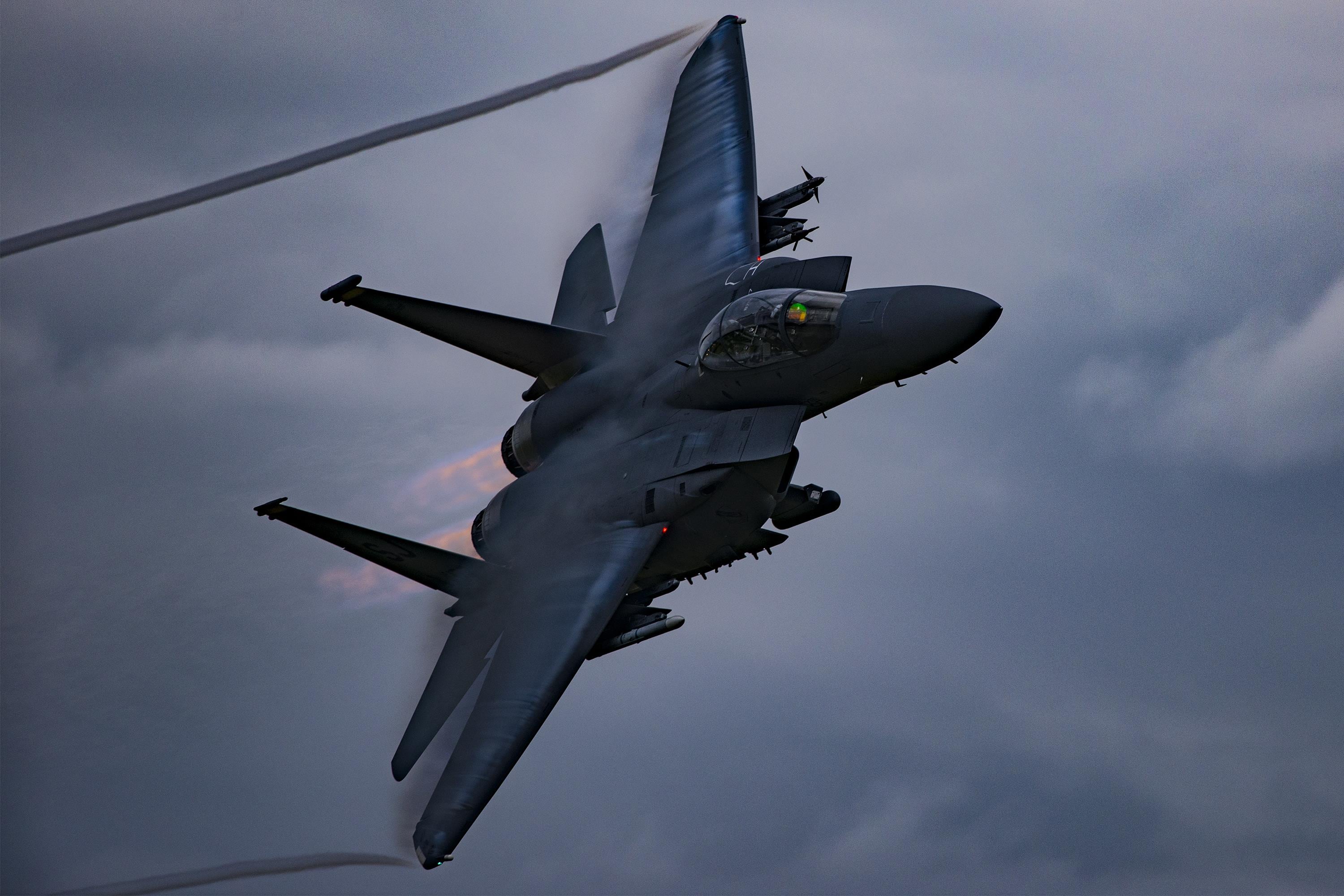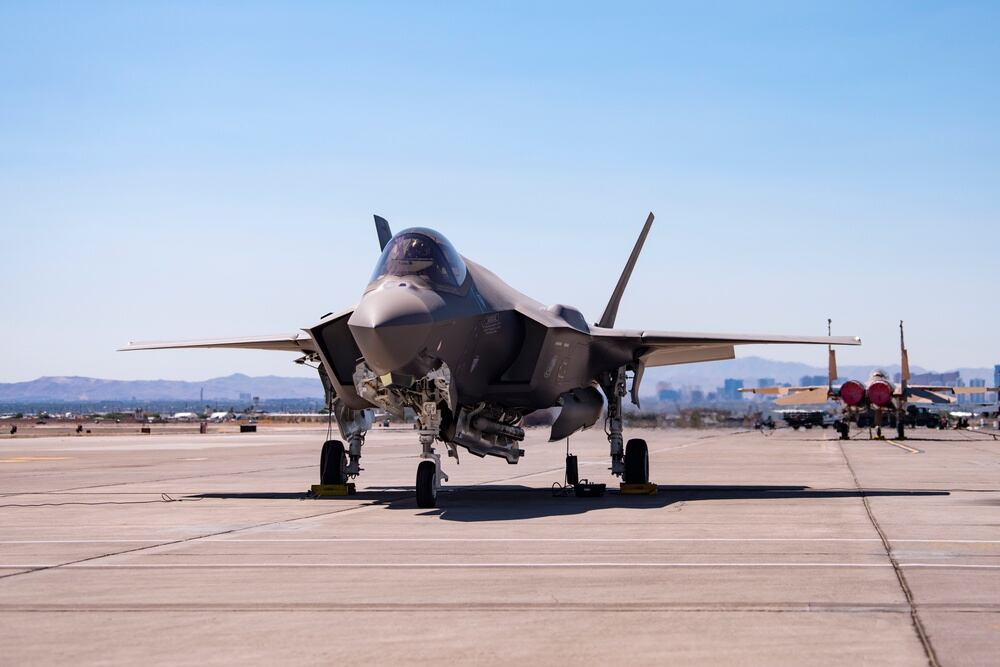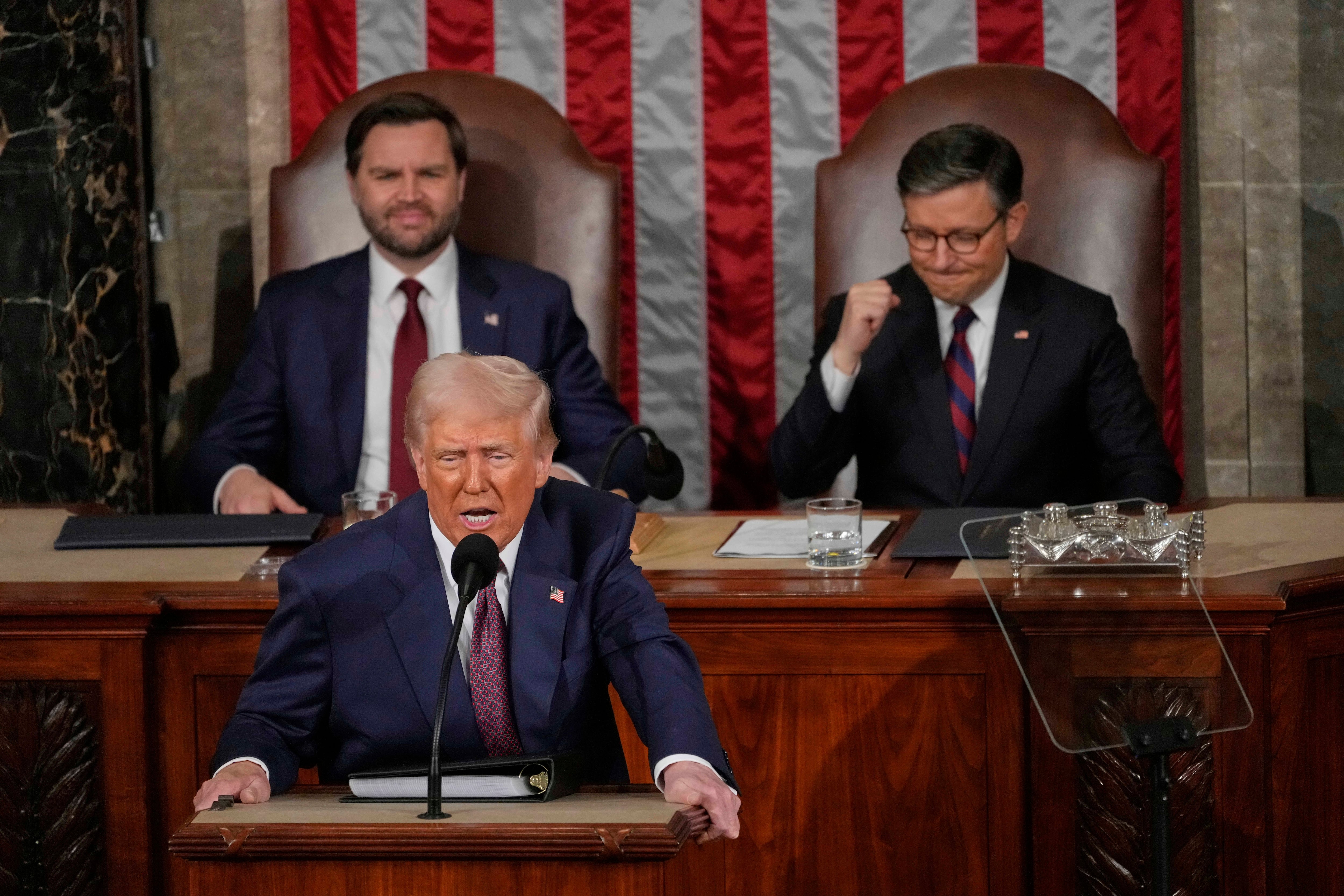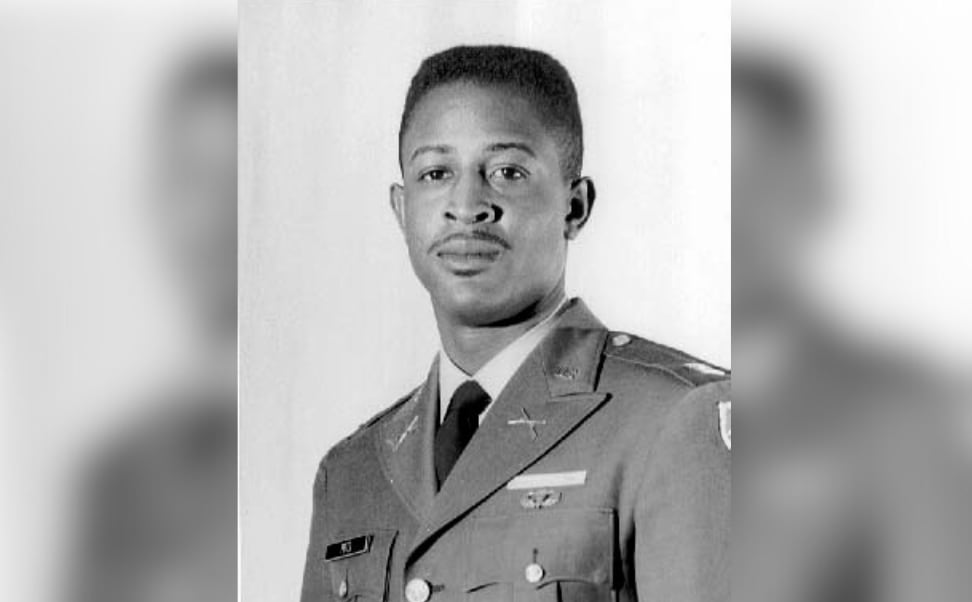America’s most advanced fighter jet is on its way to becoming the newest addition to the nuclear arsenal.
The Air Force recently wrapped up the flight testing needed to ensure the B61-12 thermonuclear bomb design is compatible with the F-35A Lightning II, paving the way for the jet to begin carrying nuclear weapons. The airframe must still become certified to conduct nuclear operations as well.
Two F-35As launched realistic test versions of the B61-12 for the first time on an unspecified date earlier this year at the Tonopah Test Range in Nevada, the Air Force said Oct. 6. Past versions of the B61 have relied on gravity to drop onto their targets, but the newest design can also hit coordinates using digital guidance.
RELATED

The B61-12 is a refurbished, consolidated version of earlier gravity bombs that will offer four blast options measuring from 0.3 to 50 kilotons — more than double the estimated yield of “Fat Man,” the larger of two nuclear bombs the U.S. dropped in Japan in 1945.
The U.S. plans to produce 480 B61-12s from fiscal 2022-2025 and phase out those with much higher yields. Experts estimate the U.S. now owns 680 B61s in total, including 230 for non-strategic platforms like fighters.
The F-35′s atomic ambitions are a piece of the country’s nuclear modernization plan — slated to cost $634 billion from 2021 to 2030 alone — that flies under the radar.
America’s nuclear stockpile is typically referred to as the “nuclear triad” of land-based intercontinental ballistic missiles, air-launched cruise missiles and gravity bombs and submarine-fired missiles. But that’s only part of the larger picture.
Fighter and attack aircraft have been equipped and trained for the dual conventional-nuclear role since the 1950s, when the concept originated to deter or fight back against a Russian nuclear attack on NATO.
They are left out of the nuclear triad thanks to a Cold War-era quirk, said Hans Kristensen, director of the Nuclear Information Project at the Federation of American Scientists.

During the standoff between the United States and the Soviet Union, the Pentagon split the nuclear arsenal between regional combatant commanders, who controlled so-called “tactical” nuclear weapons with shorter ranges and less explosive energy like the B61 and Tomahawks, and U.S. Strategic Command, which has jurisdiction over longer-range, more powerful submarines, bombers and weapons like ICBMs.
When the Cold War ended, regional commanders retained control of tactical bombs and fighter jets designed to carry both nuclear and conventional munitions. That means dual-capable fighters remain in the hands of U.S. Air Forces in Europe, and Air Force Global Strike Command now handles the strategic inventory of bombers and non-gravity weapons with STRATCOM.
It remains to be seen whether that arrangement will last.
“The new B61-12 bomb will replace all gravity bombs, whether tactical or strategic. Same weapons on tactical and strategic aircraft,” Kristensen said. “Will the stockpile plan still continue the distinction between tactical and strategic?”
Older aircraft — the F-15E Strike Eagles and F-16C/D Fighting Falcons — currently fill the dual-capable role and will be able to carry the B61-12, too. Bringing the F-35A into the mix gives the Air Force a fast, stealthy option for getting nuclear weapons past modern air defenses. It will eventually replace the older jets as the primary nuclear-capable fighter.
The F-35 will remain in the inventory longer than the B-2 Spirit bomber, the main stealth aircraft flying nuclear missions now. But it’s still unclear how many Lightning II jets will take on the new role, and the Air Force hasn’t said when it expects the F-35A to officially make that change.
“Not all aircraft will become nuclear-capable upon full certification,” the Air Force said. “Only those units with a nuclear mission will be given the hardware and manpower necessary to configure and maintain nuclear-capable F-35s.”
That could include RAF Lakenheath in England and Aviano Air Base in Italy, Kristensen said.
“There is also a semi-dormant DCA capability in the United States that might include Seymour Johnson AFB in North Carolina,” he added. “It is potentially possible that one of the new F-35A wings in the U.S. will get the nuclear mission, but I haven’t seen indications of that yet.”
While the Air Force regularly transports nukes around the world on C-17 airlift jets, the service hasn’t flown them on fighter jets since the 1960s, Kristensen said. He expects the B-2, and the B-21 Raider that will replace it, will remain as the primary platforms carrying nuclear gravity bombs.
Five NATO countries participate in a nuclear arms-sharing agreement with the United States and house about 100 American gravity bombs: Belgium, Germany, Italy, the Netherlands and Turkey. Around 60 are earmarked for use on NATO aircraft. Multiple European nations are preparing their dual-capable fighter jets to carry the B61-12 as well.
Amid the upgrade process, NATO’s annual, weeklong “Steadfast Noon” exercise with troops from 14 countries began Oct. 18 in southern Europe.
“Steadfast Noon involves training flights with dual-capable fighter jets, as well as conventional jets, backed by surveillance and refueling aircraft. No live weapons are used,” the coalition said in a release. “This exercise helps to ensure that NATO’s nuclear deterrent remains safe, secure and effective.”
The F-35 and its counterparts would carry on the longtime DCA mission of deterring and intervening in a conflict that escalates between Russia and NATO members.
Despite talk a decade ago about lessening NATO’s reliance on American nuclear arms, Russia’s annexation of Crimea in 2014, its own nuclear upgrades and the deteriorating relationship between Washington and the Kremlin caused those discussions to fizzle, said an arms control expert in Washington who requested anonymity to speak candidly.

Still, there’s disagreement over whether fighters are still a reliable deterrent in a post-Cold War world.
The DCA mission has atrophied since the Soviet Union collapsed in 1991, Richard Carver, then a lieutenant colonel, wrote in a paper at the Air War College.
“While US and NATO policy makers continue to advocate the need for the DCA mission, a combination of neglect, fiscal constraint, and public opinion have undermined the deterrent value of these systems,” Carver said.
The arms control expert questioned how introducing a nuclear-capable stealth fighter would affect stability in the region, compared to older jets that radars can see coming. The European bases that host nuclear weapons in Europe could be among the first targets for Russia if a major conventional conflict reaches a level where nuclear weapons are considered, he added.
“Are we going to either use them on advancing Russian conventional forces, or are we going to fly them in Russian territory and drop weapons on target there? And if so, why can’t our strategic bombers do that?” he said.
Whether the U.S. will opt to expand the dual-capable aircraft mission to the Indo-Pacific, where the F-35 will be a key player in the coming decades, remains to be seen. It’s not a given: the fighters already assigned to the dual-capable mission handle it in Europe alone.
The Nuclear Posture Review now underway will drive any decisions on how to manage the U.S. stockpile of 3,750 nuclear warheads, along with U.S. Strategic Command’s input, Air Combat Command boss Gen. Mark Kelly said Monday during an event hosted by the Air Force Association.
“Where we do and where we don’t lay down nuclear capabilities, obviously those are not trivial questions and decisions of our policymakers,” Kelly said in response to a question from Air Force Times. “You’ll probably know about a week after I know if we choose to expand that.”
RELATED

STRATCOM spokesperson Rachel Williams said Monday that the possibility of bringing dual-capable fighters to the Indo-Pacific “is not within the USSTRATCOM [area of responsibility], and we do not discuss hypotheticals.”
Pacific Air Forces referred questions on the topic to Air Force headquarters.
Setting up a nuclear-sharing agreement there would run aground of the Treaty on the Non-Proliferation of Nuclear Weapons, which has been in force since 1970 — after the arms-sharing agreement was already in place in Europe but where no such pact exists in the Indo-Pacific. Equipping those regional allies to use American nuclear weapons would violate the treaty, Kristensen noted.
Experts suggested bombers would be much more effective if the Pentagon goes the nuclear route in the vast Indo-Pacific because they don’t need to be as close to their target, or require as much refueling, as the F-35.
Getting the fighter near enough to East Asia in a potential conflict with China or North Korea would likely require basing it in South Korea or Japan — a massive change to America’s current understanding with those allies.
Still, Kristensen imagines the United States could move F-35As to an Air Force base in the Indo-Pacific to signal political or military intentions in an emergency.
“Since the aircraft or bombs are not deployed in the Pacific under normal circumstances, they would have to be transferred there in a crisis,” Kristensen said of the F-35A and B61. “I doubt the Air Force sees much need for that.”
Editor’s note: This story was updated to clarify remarks on potential violations of the Treaty on the Non-Proliferation of Nuclear Weapons.
Rachel Cohen is the editor of Air Force Times. She joined the publication as its senior reporter in March 2021. Her work has appeared in the Washington Post, the Frederick News-Post (Md.), Air and Space Forces Magazine, Inside Defense, Inside Health Policy and elsewhere.









